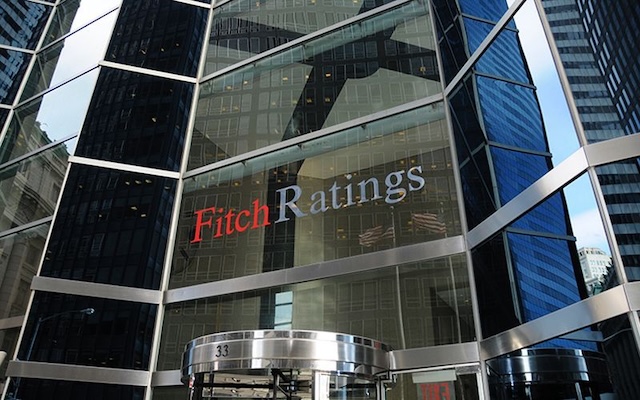.png)
When Ratings Lose Their Voice in Markets
Sovereign ratings once swayed markets. Today, investors treat them as lagging signals in a world where information moves faster than agencies.


Venkat Thiagarajan is a currency market veteran.
September 4, 2025 at 9:27 AM IST
The harsh reality of global financial markets is that the so-called common language of credit risk, painstakingly built over decades, has lost much of its voice. For years, sovereign credit ratings were viewed as the ultimate shorthand for risk, shaping borrowing costs, guiding capital flows, and influencing how investors priced bonds and currencies. They represented a system of notations that compressed complex fiscal, monetary, and political realities into a few letters.
Yet in an information-saturated era, the power of ratings has waned. What once looked indispensable is increasingly seen as a lagging signal, often confirming what markets already know. In this environment, sovereign ratings have become less of a compass and more of a rear-view mirror.
What ratings were meant to do
At their core, sovereign credit ratings are assessments of a government’s ability and willingness to repay its debt on time, both principal and interest. Agencies such as Standard & Poor’s, Moody’s, and Fitch build a hierarchy of rating levels, ranging from AAA at the top to D at default. Bonds deemed investment grade (BBB and above) are supposed to carry very low default risk, while those in speculative territory imply progressively higher chances of failure.
The framework once carried enormous influence because information was scarce. Investors needed a shorthand, and agencies offered it. Their ratings acted as gatekeepers to global capital. Countries prized upgrades because they lowered borrowing costs. Downgrades were feared because they could unleash capital flight and rising yields.
Market ahead of agencies
Conventional wisdom still holds that sovereign ratings are important for three main reasons: they affect borrowing costs, constrain corporate ratings, and provide signals of financial stability. In practice, however, markets rarely wait for agencies to speak.
Investors are constantly pricing in macroeconomic and geopolitical risks. They trade on expectations, not confirmations. This means that by the time an agency issues a downgrade or upgrade, the adjustment has often already happened in bond yields, currency movements, or credit spreads.
When the UK lost its AAA status, benchmark gilt yields did not soar; they fell to record lows. When Moody’s cut the US government’s credit score by one notch, there was noise in the media but little real market reaction. The muted responses underscored the fact that investors had long discounted such moves.
Sovereign ceiling eroded
For decades, the sovereign rating acted as a ceiling for corporate and bank ratings. Agencies rarely allowed a company or financial institution domiciled in a country to be rated higher than the sovereign itself. The logic was simple: if a government was deemed risky, its corporations could not be safer.
That logic has weakened. Emerging market companies have become increasingly global in their operations and funding. Some firms generate revenues largely abroad, hold assets in multiple jurisdictions, and borrow in hard currency with disciplined financial management. As a result, their credit profiles sometimes exceed those of their home sovereigns. Investors have grown comfortable with this reality, eroding the rigidity of the sovereign ceiling.
Investors change their playbook
Another driver of the shift is the behaviour of institutional investors. Pension funds, insurance companies, and asset managers once relied heavily on ratings because their mandates often included strict floors for credit quality. Today, many of these investors have more flexible strategies. In a world of ultra-low yields and persistent search for returns, they are willing to look beyond rating notations and dig into fundamentals themselves.
This does not mean ratings are irrelevant. They still matter for portfolio allocation rules, regulatory requirements, and index inclusion. But they are no longer the decisive factor. A start-up in a country with a low sovereign rating could, within years, become a global leader and command investor attention regardless of its home country’s sovereign status.
From information asymmetry to transparency
The fading influence of rating agencies also reflects the collapse of information asymmetry. In the past, borrowers knew more about their creditworthiness than lenders, creating uncertainty. Agencies filled that gap, standardising risk assessment and allowing investors to trade on common metrics.
In today’s markets, information flows instantly. Governments publish reams of macroeconomic data, central banks communicate frequently, and global investors have access to sophisticated analytics. The premium once attached to rating agency judgments has shrunk. Economic theories based on asymmetric information remain logically valid, but their real-world relevance has diminished.
Why markets brush them aside
The basic premise of financial markets is that investors demand a risk premium for uncertainty. This macro risk premium is priced into yields and spreads long before a rating agency issues a statement. Markets operate forward-looking models, constantly absorbing information about fiscal deficits, external balances, political risks, and monetary conditions.
This explains why ratings are often procyclical rather than predictive. Upgrades tend to occur during boom periods, downgrades in crises. By the time the announcement comes, the market has already moved. Ratings provide validation rather than discovery.
For investors, the only real surprises occur when agencies act against expectations—such as downgrading a sovereign on stable outlook. Even then, the market impact tends to be short-lived.
Spillovers and limits
There remain channels through which sovereign rating news can affect financial markets. Downgrades can trigger index exclusions, forcing passive investors to adjust portfolios. They can also influence the cost of capital for corporates if investors choose to treat sovereign ratings as a floor. But the scale of these effects is smaller than often assumed.
Contrary to popular belief, a sharp downgrade does not always deepen a crisis. Sometimes markets have already priced in the worst. By contrast, a gradual drip of downgrades can exacerbate uncertainty, dragging out adjustment and prolonging instability. The effects are not linear, and their potency is weaker than conventional wisdom suggests.
Procyclicality and credibility
Another critique of rating agencies is their procyclicality. Because they react to events rather than anticipate them, ratings can amplify cycles instead of smoothing them. This has been evident in multiple crises, where agencies downgraded sovereigns only after markets had turned, adding to gloom rather than moderating it.
This reactive posture undermines credibility. Investors are less inclined to treat ratings as leading indicators and more likely to view them as commentary. In the modern context, they function more as a lagging signal that adds little to market efficiency.
Still part of the architecture
None of this means sovereign ratings are obsolete. They remain woven into the fabric of financial regulation and portfolio mandates. For some investors, ratings are still a convenient filter. For governments, an upgrade still carries prestige, while a downgrade remains politically uncomfortable.
Yet their diminished ability to move markets is undeniable. In an age where algorithms, models, and real-time data dominate, the ratings language feels increasingly outdated.
The twilight of a language
David Beers of Standard & Poor’s once described sovereign ratings as a “common language of credit risk.” That language helped investors negotiate a complex financial world. But languages evolve, and some fade when better alternatives emerge.
In today’s global markets, with transparent data, forward-looking pricing, and vast pools of capital, the shorthand of rating notations looks increasingly like an artefact of an earlier age. Investors may still glance at ratings, but they do not rely on them.
The function that once seemed central has been downgraded by the very markets it sought to guide. The common language of credit risk, once so powerful, is losing its voice.
* Views are personal.
BasisPoint Briefing is an Explainer from seasoned practitioners for readers who want more than the basics.



